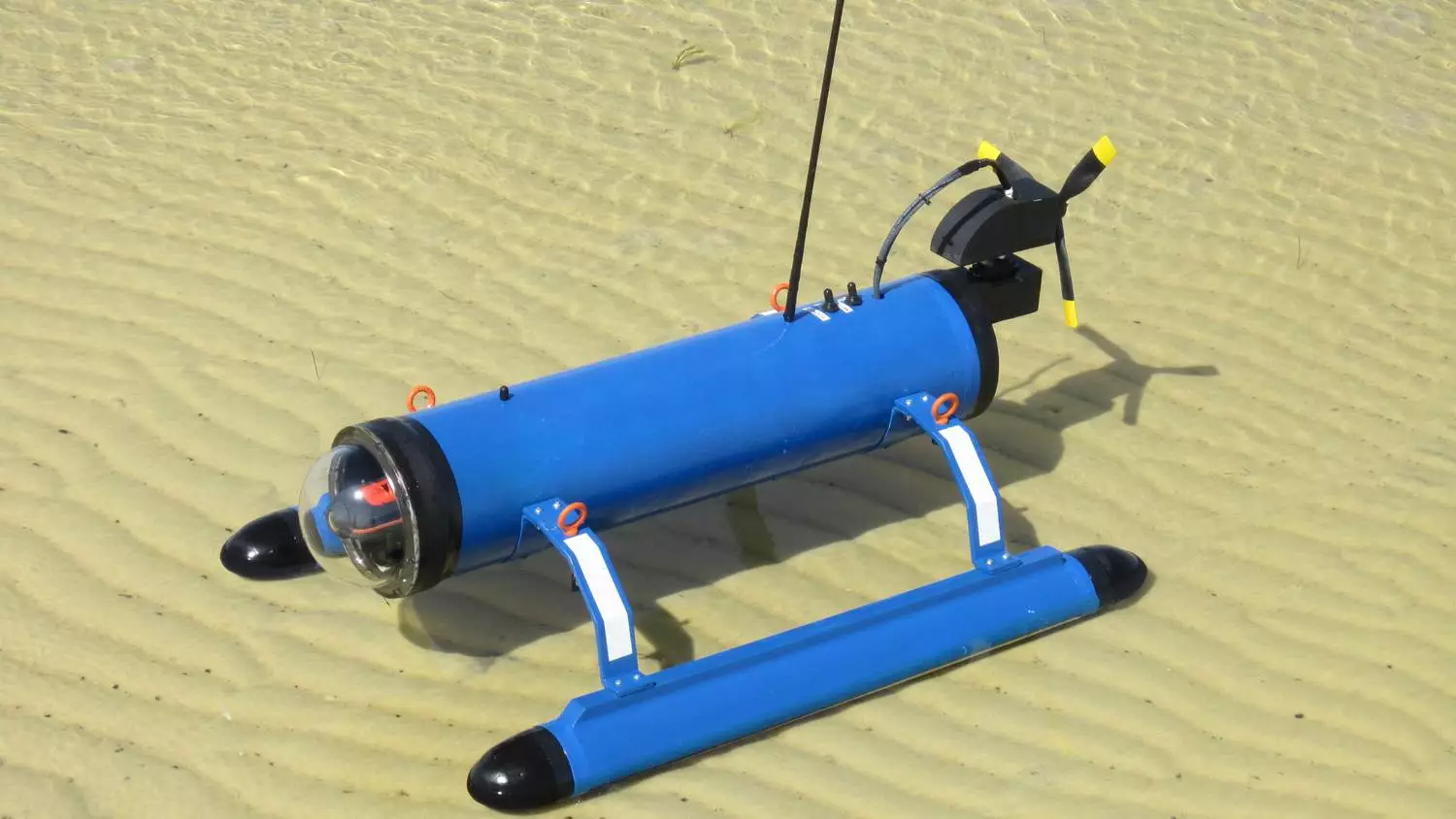If you want to explore places like the shallow, weedy Florida Everglades, do you use a traditional boat with a submerged propeller? Heck no, you use an air boat! You know, one of those things with the big airplane-style propeller on the back – the boat is pushed across the surface of the water, and there are no fragile underwater bits to worry about. Aerospace engineer Larry Friese has taken that same principle, and applied it to his remote-control FrankenDrone USV ... or Unmanned Surface Vehicle.
First of all, there are already quite a variety of radio-controlled air boats commercially available. What makes the FrankenDrone different is the fact that – like some flying quadcopter drones – it’s designed more as a practical tool than as a not-so-useful miniaturized model.
Although it’s still in the working prototype stage, the idea is that buyers will be able to select between a variety of pre-built components, then assemble them to create their own purpose-specific watercraft – hence the reference to Frankenstein in the name.

As can be seen in the diagram above, all versions of the USV would consist mainly of a central sealable body, capable of carrying small cargo items; two flotation pontoons linked to that body by struts; interchangeable front end caps for different applications; and, a rear propeller driven by a sealed electric motor.
The operator could remotely swivel that motor/propeller to either side, allowing the FrankenDrone to be steered via thrust vectoring. Although the servo is exposed in the prototype, production versions would see it sealed against water and salt damage.

Additionally, the main body would incorporate longerons (not installed on the prototype shown above) – laterally-mounted raised strips with holes drilled in them, designed to let users attach all manner of tools and other objects to the USV. According to Friese, these could include things like cameras with pan/tilt gimbal mounts, microphones, lights, bait bags(!) and underwater cameras.
Larry is currently raising productions funds for the FrankenDrone, on Kickstarter. While some combinations of components are available for lesser amounts, a pledge of US$1,200 will be required to get you everything you need to assemble a complete system. For $2,400, you can get one that’s already put together and ready to go, when and if the funding goal is met.
The prototype can be seen in action in the video below.
Source: FrankenDrone via Kickstarter












